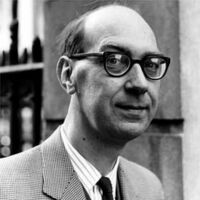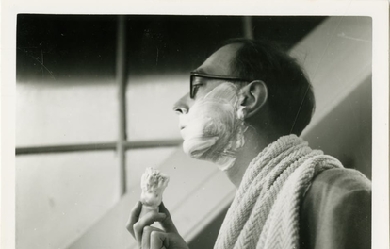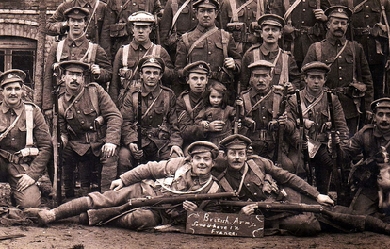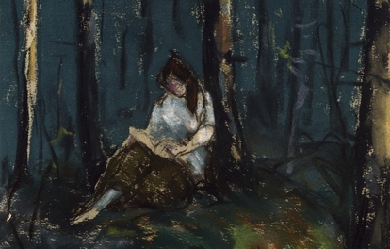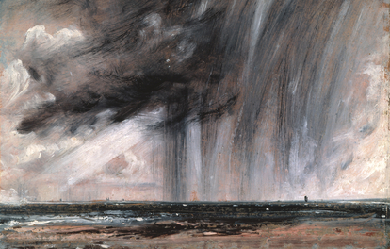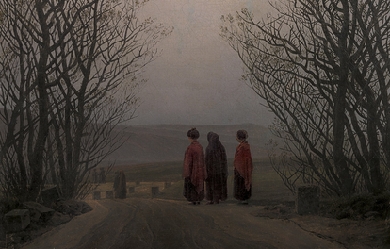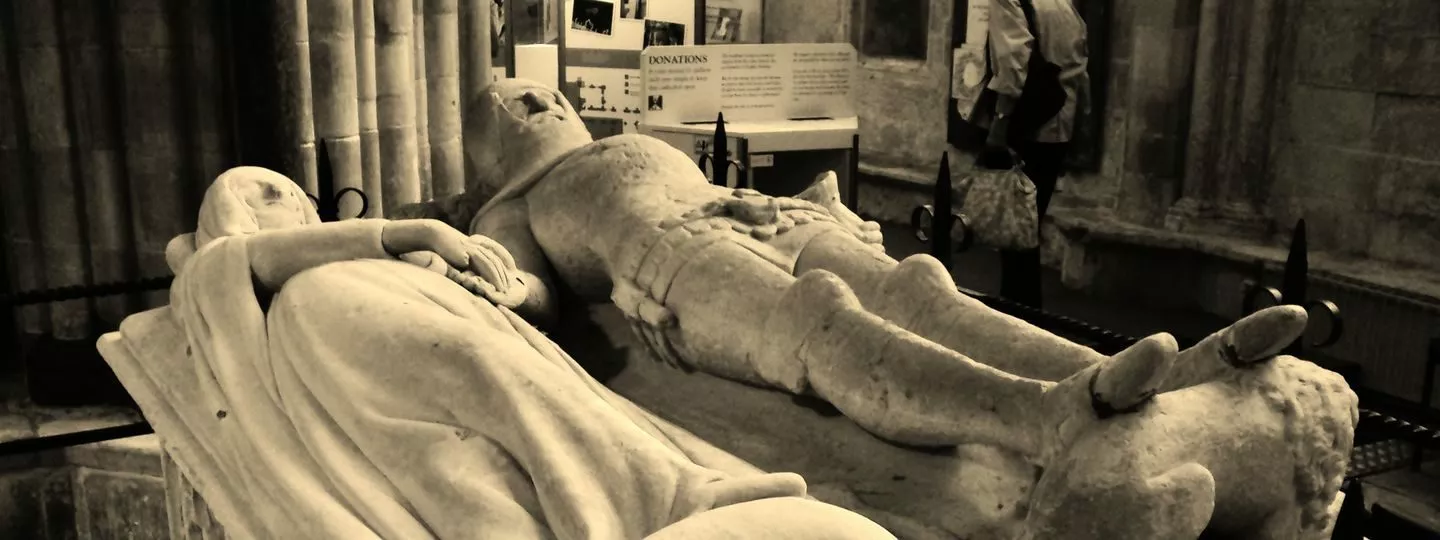
An Arundel Tomb
by Sophia Brookshire
Philip Larkin's poem "An Arundel Tomb" was published in 1964, in his collection of poems entitled, The Whitsun Weddings. The poem comprises of seven verses with six lines each, and follows the rhyming pattern of abbcac. This poem is an example of ekphrasis, which is a graphic description of a visual work of art. The Arundel Tomb is a "fourteenth-century table tomb of Richard Fitzalan III [died in 1376], the thirteenth earl of Arundel, and his wife, Eleanor, in the Chichester Cathedral" in Sussex, England (Ferguson 1029). Larkin actually visited this tomb, and was so touched by the stone effigies that he paid tribute to them with this poem. This poem is a reflection on death, the passage of time, and the ability of love to transcend all.
Stanzas one and two describe the tomb. The couple lay side-by-side, which connotes equality among the couple. Their faces have become "blurred" and unrecognizable with the passage of time; time and nature strips them of their identity. Their "proper habits" (clothing) are barely visible anymore; he is wearing a suit of jointed armor, and she is wearing a dress with a stiff "pleat" (fold). At their feet lay their two "little dogs," which Larkin finds "absurd." Dogs represent loyalty, companionship, and faithfulness, which is what the overall tomb is trying to convey about the couple. The plainness of the pre-baroque tomb barely catches the eye of the observer. It isn't until the observer sees the earl's "left-hand gauntlet" (a dress glove extending above the wrist) holding his right-hand glove; his right hand holds his wife's right hand, in a sign of eternal love and faithfulness. Larkin is shocked by this tender display of affection; their love has been eternally memorialized in stone, and as long as their tomb survives so does their love.
Larkin points out in stanza three the couple had not intended for their tomb to become a famous monument of eternal love; instead, the tenderness depicted between these two was just meant for their friends to appreciate, and recognize as authentic. If the couple had known what would become of their tomb they might have changed their minds about commissioning it.
Stanzas four through six discuss the passage of time. The couple would not have guessed "how early in their supine" (lying on the back) "voyage the air would change to soundless damage." The voyage references the journey to the afterlife. "Soundless damage" refers time and nature slowly eroding the effigies. Time has taken the "old tenantry" of Arundel (tenants collectively; refers to the couple's friends and family) away and new people have moved in; even the couple's way of life has disappeared. These people have no idea who the couple is, but they like to look upon the effigies all the same. They no longer read refers to the couple's Latin names (line18); Latin has become an archaic language and is unfamiliar to the new tenants. "Rigidly" the effigies remain linked eternally together. Seasons come and go, uncounted. "Snow" and "light" are both symbols of purity and cleansing. New life in the form of baby birds fills the air of the "bone-riddled ground" (cemetery/cathedral). There is an endless procession of "altered people" coming to the cathedral to wash "at their identity." The people could be altered simply by viewing the tomb of eternal love (like Larkin was), or they are altered by religion. "Washing" reminds me of a baptism; a baptism is considered to be a spiritual rebirth. The couple is left "helpless" (they have no control over what happens to them now) in an "unarmorial age" (meaning no knights, etc.). Only a "trough" (a long row) of "smoke in slow suspended skeins" (a flock of geese in flight, v-formation) "above their scrap of history" and "an attitude" remains. Attitude refers to both the knightly manner of the Middle Ages, and their poses that conveys eternal love and faithfulness.
Time has "transfigured" (changed their appearance) to one of untruth; their effigies were originally created to show them as they wanted to be in their afterlife, but they have no become both a symbol of love and fidelity and a tourist stop. Their tomb has become their "final blazon" (final expression), and is all that defines them. It proves that "our almost-instinct" is "almost true," which is "what will survive us all is love." This last line is perhaps Larkin's most famous line, and it can be interpreted in two ways: first, in an optimistic way, their love is immortalized, and as long as their tomb lasts, so will their love. We instinctually believe that love will conquer all, including death. Optimism is unlike Larkin, which is why this poem would be considered quite a breakthrough so-to-speak for Larkin. The second is a pessimistic, which is more Larkin-like, eternal love, is a delusion that is only meant to distract us from death. Immortality doesn't exist. The effigies are nice to look at, but it was a sculptor who made them look that way not the couple themselves.


